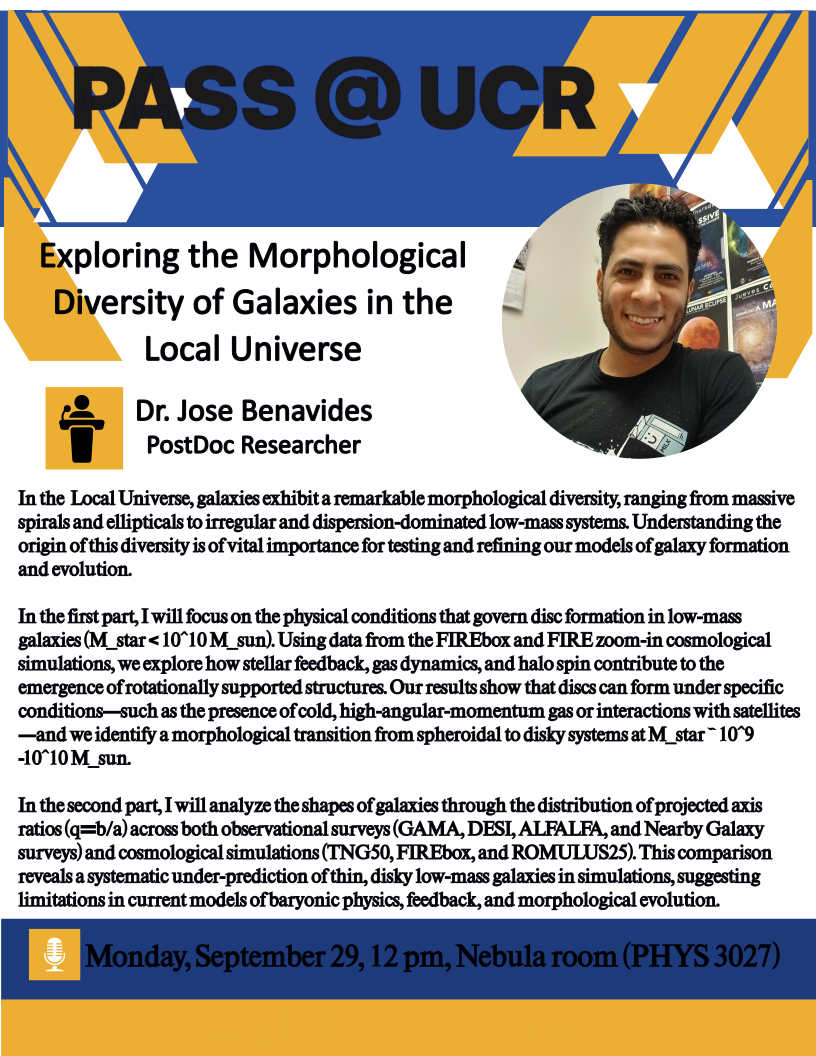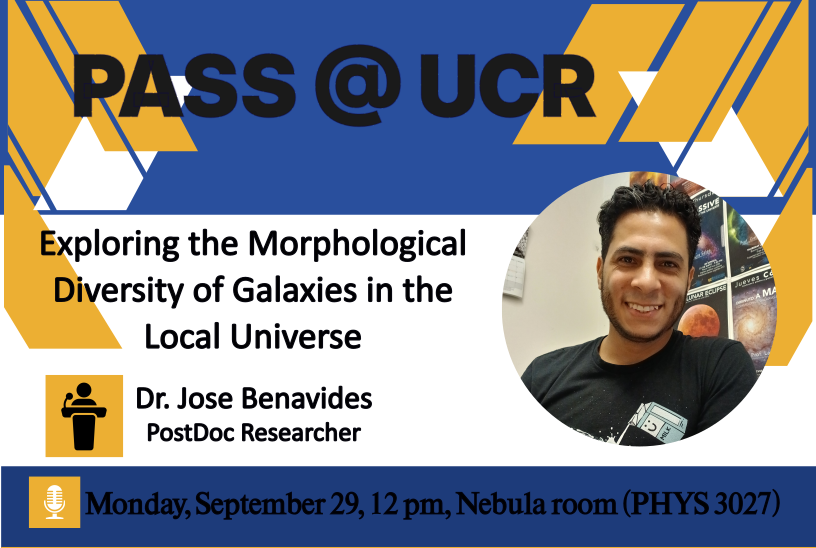Dr. Jose Benavides, PostDoc Researcher
Monday, 12:00 pm, Nebula Room (PHYS 3027)
Exploring the Morphological Diversity of Galaxies in the Local Universe
In the Local Universe, galaxies exhibit a remarkable morphological diversity, ranging from massive spirals and ellipticals to irregular and dispersion-dominated low-mass systems. Understanding the origin of this diversity is of vital importance for testing and refining our models of galaxy formation and evolution.
In the first part, I will focus on the physical conditions that govern disc formation in low-mass galaxies (M_star < 10^10 M_sun). Using data from the FIREbox and FIRE zoom-in cosmological simulations, we explore how stellar feedback, gas dynamics, and halo spin contribute to the emergence of rotationally supported structures. Our results show that discs can form under specific conditions—such as the presence of cold, high-angular-momentum gas or interactions with satellites—and we identify a morphological transition from spheroidal to disky systems at M_star ~ 10^9 -10^10 M_sun.
In the second part, I will analyze the shapes of galaxies through the distribution of projected axis ratios (q=b/a) across both observational surveys (GAMA, DESI, ALFALFA, and Nearby Galaxy surveys) and cosmological simulations (TNG50, FIREbox, and ROMULUS25). This comparison reveals a systematic under-prediction of thin, disky low-mass galaxies in simulations, suggesting limitations in current models of baryonic physics, feedback, and morphological evolution.

The video recording of this talk is available at link .
